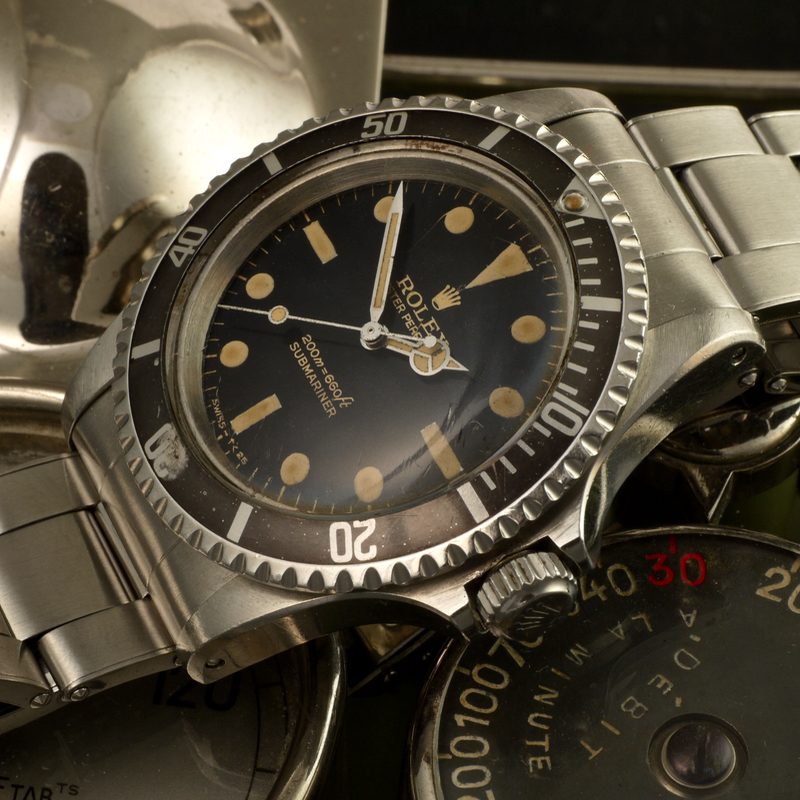
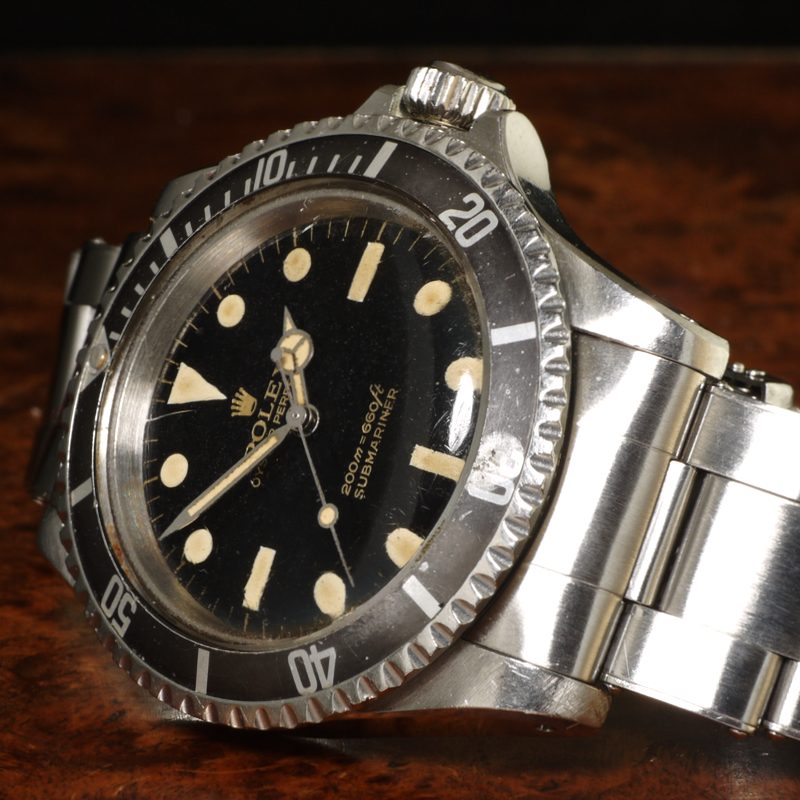
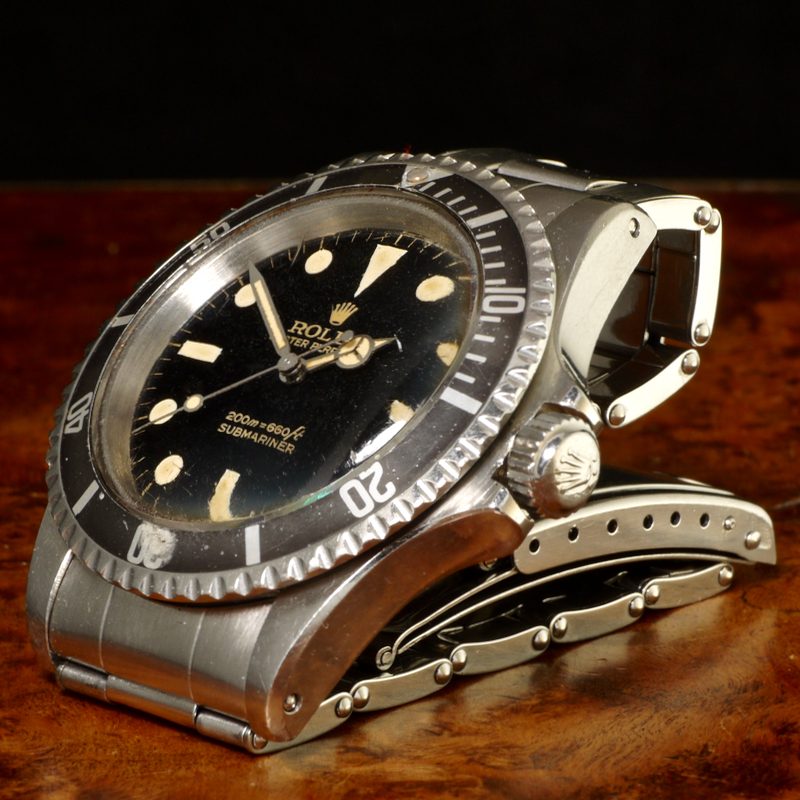
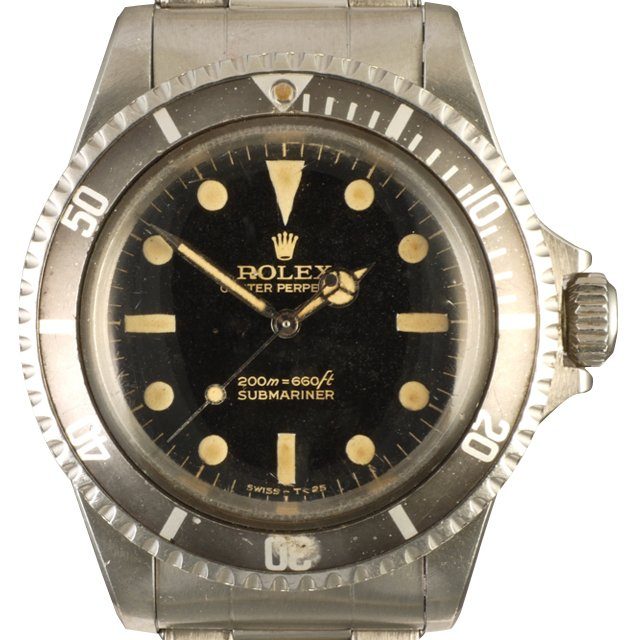
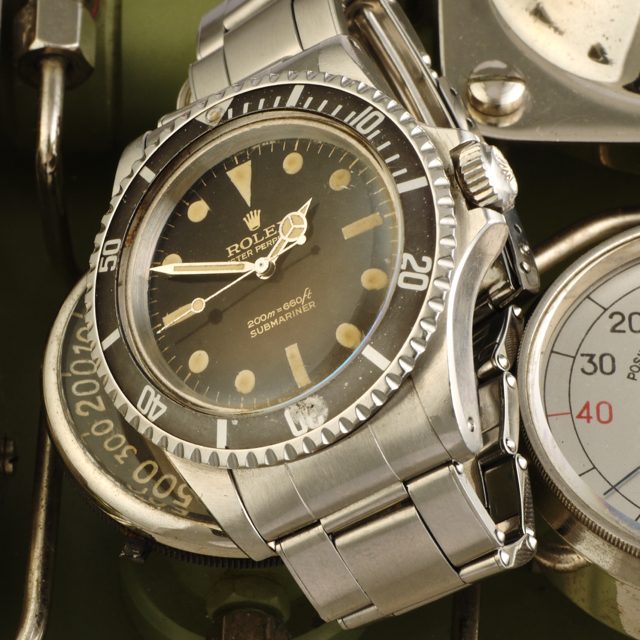
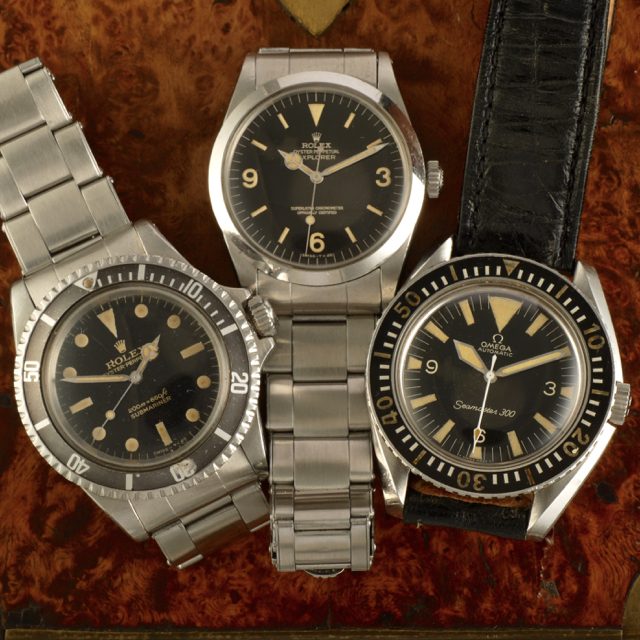
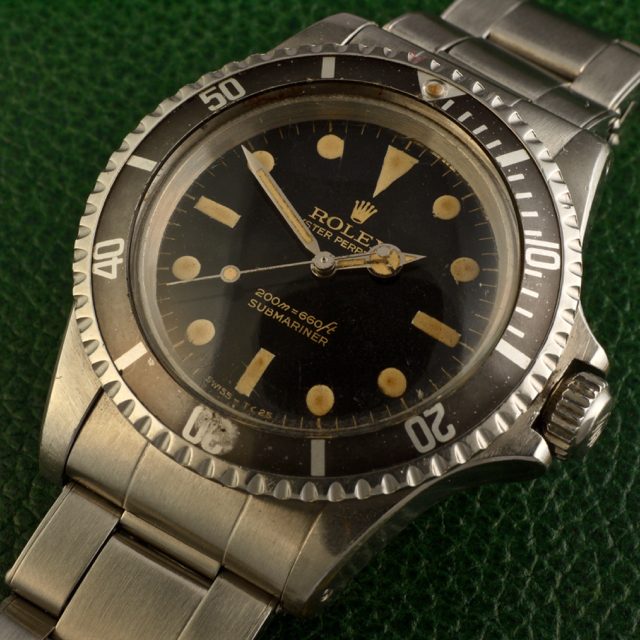
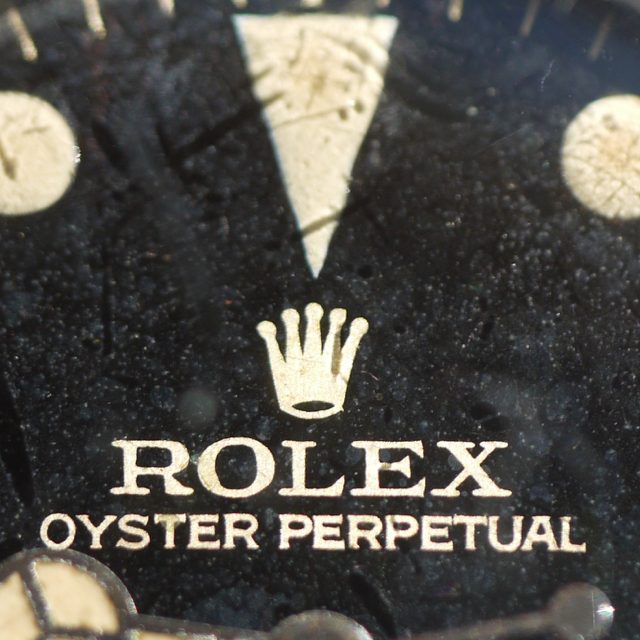
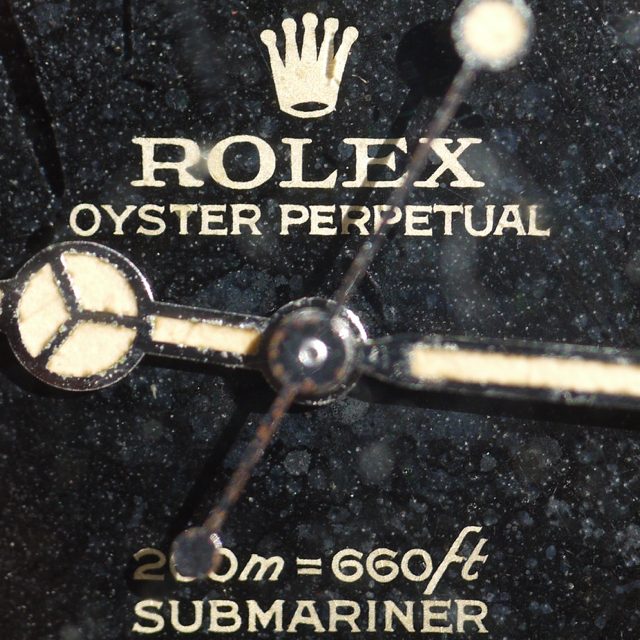
Rolex Submariner Bart Simpson
MIT biochemist Har Khorana finishes deciphering the DNA code1966 Rolex Submariner Bart Simpson ref. 5513. The Bart Simpson dial, so named because of the odd shaped coronet resembling the odd shape of Bart Simpson’s head, is considered by collectors to be the last run of gilt gloss dials for the 5512 and 5513 before the change to the matte dials. As such, the serial number range for the dial is typically in the 1.3 to 1.6 mil range.
Starting from the top of the dial, its easy to spot the coronet for which the dial is named. But, I don’t want to stop there because I think it’s important for collectors to know the other nuances about the dial to make sure that the dial has not been altered/repaired/restored etc.
The Rolex Oyster Perpetual Submariner is a line of sports watches designed by Rolex, known for their resistance to water and corrosion. The first Submariner was introduced to the public in 1954 at the Basel Watch Fair and the watch industry hasn’t been the same since. The Submariner was never released as a luxury product, but rather a professional diver’s watch that anyone could enjoy and is considered “a classic among wristwatches” and the most recognizable watch in the world. Due to its popularity, it has become the subject of massive counterfeiting.
The Submariner is the worlds most desirable watch for good reason. Durable and legible, its slick style remains timeless, and most importantly it is suitable for almost any man (and many women) regardless of look, style, or age.
The first ever specialized diving watches were the Panerai, used by the Italian frogmen in the Second World War. Actually they were Rolex 3646s with special dials made by Panerai.
Right after WWII, two French combat diving corps started to search for a military grade diving watch, big and easy to read underwater, hermetically sealed and capable to absorb shocks – this helped Blancpain to develop the legendary Fifty Fathoms introduced in 1953. The transformation of the simple water resistant watch to the tool diver watch happened at that exact point. The next year Rolex launched perhaps the most famous diver watch of them all, the Rolex Submariner; from that point most of the Swiss companies started to shift their attention towards the sea, trying to produce reliable underwater-capable wristwatches.
Rolex was founded in 1905, the goal was to create wristwatches based on 3 challenges.
The first challenge was archived in 1910 when Rolex sent its movement to the School of Horology in Bienne and awarded the worlds first wrist watch chronometer rating.
Realizing the value of a timing certificate, the company decided they would not accept any movement unless it passed a Rolex seven day battery of tests, so Rolex set the timing standard for the rest of the watch industry.
In 1926 the second challenge was achieved with the birth of the Oyster, so-named as it was as impenetrable as an oyster! Although this invention was initially thought of with skepticism and took some notable events to break this preconception, one year later Mercedes Gleitze swam across the icy waters of the English Channel wearing a Rolex Oyster on her wrist.
All three challenges were completed in 1931 when Rolex launched the first automatic watch. The idea was not new, but it was Rolex that finally perfected and patented the Perpetual self-winding mechanism.
Now the scene was set. Rolex were now producing a watch small enough to be worn on the wrist, impervious to outside elements and which required no winding from the wearer; the Rolex Oyster Perpetual.
Forbes ranked Rolex No.72 on its 2014 list of the world’s most powerful global brands. Rolex is the largest single luxury watch brand, producing about 2,000 watches per day, with estimated 2012 revenues of US$7.7 billion. Rolex SA is owned by the private Hans Wilsdorf Foundation, which is registered as a charity and does not pay corporate income taxes.
